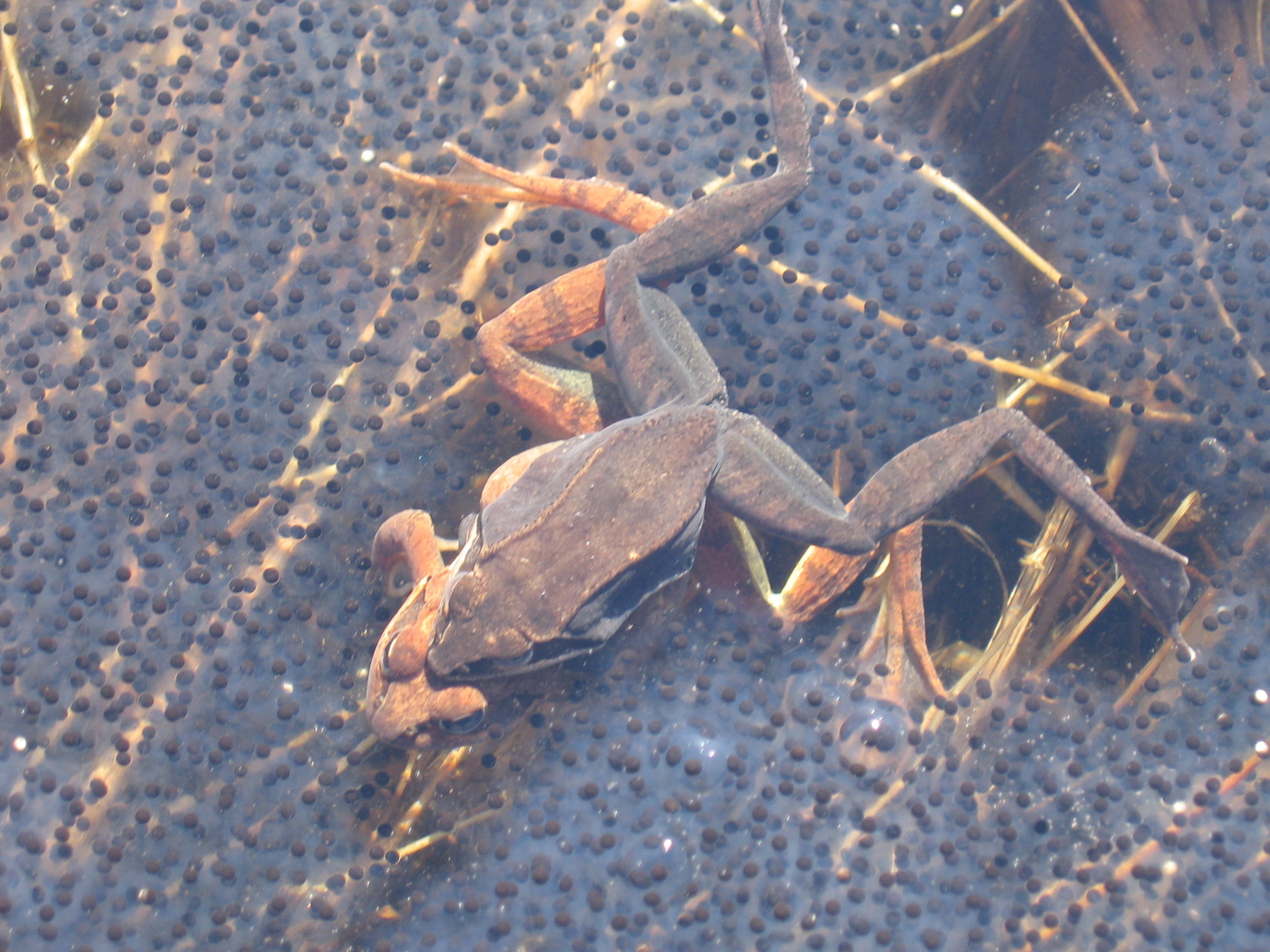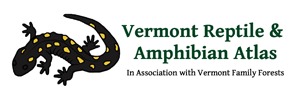
Herp Update: presentation, frog math, creative names — April 25, 2022
Upcoming Presentation
I am giving a presentation on Significant Reptiles and Amphibians of Monkton (and the Monkton Underpasses) for the Monkton Conservation Commission this Wednesday, April 27th. It is a hybrid presentation, so you can attend in person or through a Zoom link. It begins at 6 PM at the Monkton Town Hall and it is free and open to the public. For more details and the link, visit their website at the link below.
Wood Frog math, some accurate, some guesses
Herpers, at one of our study sites at an elevation of about 1,400 feet in Lincoln, the Wood Frog eggs are now beginning to hatch.
Wood Frogs are an explosive breeder. They are the first of the frogs to move in the spring, and almost all of a local population have mated and left their ponds within a couple weeks. We saw about 15,000 tiny Wood Frog tadpoles earlier today in one small pond. Although that is a lot of tadpoles, we counted ~226 Wood Frog egg masses in that pond. Although the amount of eggs in a Wood Frog egg mass varies, to make the math simple, we will say that there were roughly 500 eggs in each mass. If they all hatched, they would produce about 113,000 tadpoles in that one pond. We estimated 90,000 tadpoles in that same pond back in 2001. However, those egg masses closest to the surface froze during one of our cold spells and died. In addition, Eastern Newts seem to love eating frog eggs, and there are lots of newts in this pond, so the number of tadpoles that will make it to hatching this year in that pond may end up close to 30,000. Of course, once they are hatched, they will still be prey for newts, salamander larvae, dragonfly larvae, Wood Ducks, and many other predators. Of those that metamorphose and make it back into the woods, most will become prey to thrushes, sparrows, snakes, toads, shrews, hawks, owls, and scores of other predators. So, in the end, if this population of Wood Frogs remains stable, the number of Wood Frog females that live long enough to return to this pond and breed, will be about the same as the number of adult Wood Frogs females from this pond that die each year. We don’t know that number, but if this population stays stable, that number might be around 45 females. Out of 113,000 eggs, if 1/2 (56,500) were female, and 45 of those females live long enough to make it back to this pond to breed, that means that roughly 8 out of 10,000 eggs made it to breeding adult size and back to the pond. Of course, I made lots of assumptions with this math; some of those assumptions are most likely wrong—still, the idea is the same. Perhaps 1 out of 10,000 eggs will produce a frog that lives long enough to return to this pond. All the rest will be food for other living things.
There are very few cars that travel the small dirt road about 40 meters away from this pond. So very few Wood Frogs are run over. But if traffic increased, and 45 female Wood Frog survivors got killed in the road every year, this population would soon disappear.
In the photo below, notice that the female Wood Frogs are much redder than the males during the breeding season.
Creative naming
People who contribute records sometimes come up with pretty creative names for what they have seen. One of the reports I received this week was of a “Spotted Mole Lizard”. This was almost certainly a Spotted Salamander. It is shaped somewhat like lizards, but lizards are reptiles with dry scaly skin, ear openings, and claws. Salamanders have none of those. Spotted Salamanders are in a group that spends much of their lives underground, so they are called mole salamanders. So, you can see where the “mole” part of the name came from.
My point is, that it is very helpful when reports are accompanied with photos. Even if you are unsure of what species you are looking at, we should be able to figure it out from some good clear photos.
— Jim


